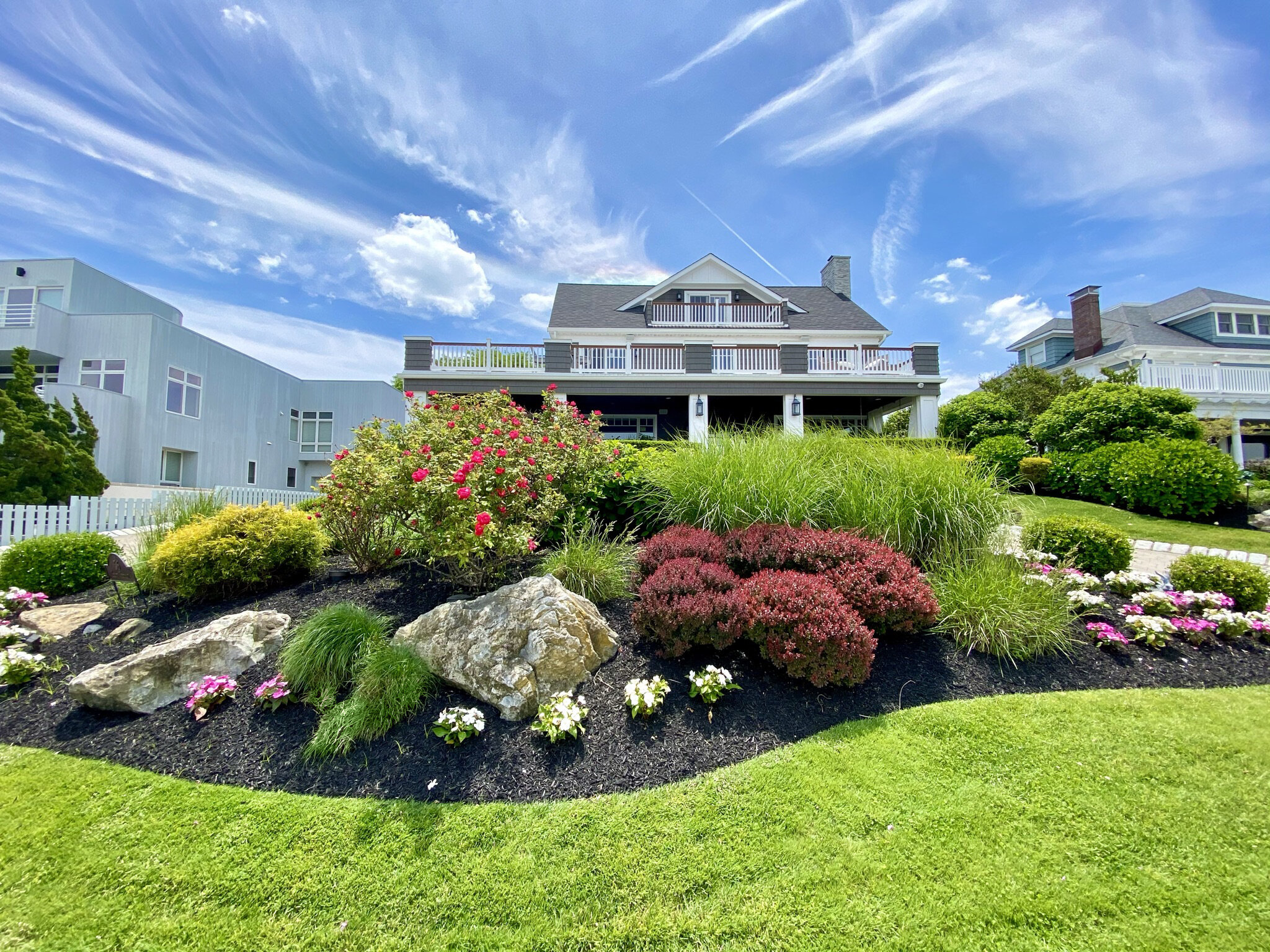Discover the Perks of Sustainable Palm Desert Landscaping Techniques
A Comprehensive Overview to Creating and Implementing Effective Landscaping Solutions
The art and science of landscaping prolong past mere aesthetics; they involve a thoughtful combination of design principles, ecological stewardship, and functional execution. A detailed overview to reliable landscaping services begins with an extensive understanding of your outside area, stressing the value of unity, equilibrium, and proportion. As we explore sustainable techniques and the selection of proper flora, the ramifications for biodiversity and area wellness come to be progressively evident. What techniques can one utilize to ensure these landscapes not just prosper however additionally thrive attuned to their surroundings?

Comprehending Landscape Design Principles
One may wonder what fundamental elements add to reliable landscape layout. At its core, successful landscape design depends upon numerous essential principles that lead the arrangement and selection of components within a room. These principles consist of unity, balance, rhythm, and proportion, each offering to produce an unified exterior environment.
Unity describes the natural connection amongst different elements, ensuring that they interact cosmetically and functionally. Balance can be attained with asymmetrical or in proportion arrangements, enabling the landscape to really feel steady and welcoming. Proportion includes understanding the range of aspects in connection with each various other and the surrounding setting, promoting visual consistency and comfort.

Assessing Your Outdoor Space
Prior to carrying out the principles of landscape style, a thorough assessment of your outside area is vital. This preliminary assessment assists specify the extent of your landscaping job and guarantees that your style straightens with the special characteristics of your residential property. Begin by analyzing the dimensions of your area, taking precise measurements to understand the offered area for numerous aspects such as pathways, outdoor patios, and gardens.
Following, observe the existing functions of your landscape, consisting of topography, dirt quality, and drain patterns. These elements substantially affect plant choice and placement. Furthermore, assess the sunshine exposure throughout various areas throughout the day, as this will impact the kinds of plants that prosper in your yard.
Think about the microclimates produced by structures, trees, and various other challenges, as they can influence temperature and moisture levels. Finally, take note of any type of existing plants or hardscape elements that you desire to preserve or get rid of. This detailed examination lays the groundwork for a effective and well-informed landscaping solution, guaranteeing that your design is not just aesthetically pleasing however sustainable and likewise useful for many years to come.
Lasting Landscaping Methods
These methods not just promote environmental equilibrium yet additionally boost the practical and aesthetic worth of a landscape. Applying reliable watering systems, such as drip watering, decreases water waste and makes sure that next plants receive adequate moisture (Palm Desert Landscaping).

One more efficient strategy is the strategic positioning of hedges and trees to give all-natural windbreaks and color, therefore lowering energy costs (Palm Desert Landscaping). Rain gardens can be integrated right into the landscape style to handle stormwater overflow properly, filtering system toxins prior to they go into waterways
Picking the Right Plant Kingdoms
Selecting the right plants for your landscape is vital to accomplishing both aesthetic appeal and environmental harmony. The process starts with an understanding of your regional climate, dirt problems, and the certain microenvironments within your landscape. Examining variables such as sunshine exposure, moisture levels, and existing plants will certainly aid you select plants that flourish in your unique setup.
Take into consideration including indigenous plants, as they are well-adapted to local conditions, call for much less maintenance, and assistance neighborhood wildlife. Additionally, selecting a varied range of species can boost biodiversity while lowering the threat of illness and insect outbreaks. It is vital to evaluate the growth practices, growing durations, and seasonal shades of possible plants to create a natural and dynamic landscape.
In addition, believe regarding the planned use the area; as an example, if the location will experience high foot traffic, go with resilient ground covers. By thoughtfully selecting plants that line up with both your environmental demands and visual goals, you can develop a lasting landscape that not only boosts your residential property yet likewise contributes favorably to the bordering community.

Execution and Upkeep Methods
When the ideal plants have been picked for your landscape, here the focus shifts to efficient execution and ongoing upkeep techniques. Effective setup starts with proper website prep work, which includes dirt testing to figure out nutrient degrees and pH, followed by modifying the soil as required. Carefully prepare plants according to their development practices and light needs, ensuring appropriate spacing to advertise healthy development.
Irrigation is a critical element of execution. Establish a watering routine that takes into consideration the details needs of each plant types, readjusting for seasonal changes. Making use of drip irrigation systems can boost water efficiency and minimize runoff.
Upkeep strategies should be implemented to make sure the longevity and vigor of your landscape. Routine tasks consist of weeding, mulching, and trimming to control growth and prevent illness. Fertilizing ought to be conducted based upon soil examinations, supplying the required nutrients without over-fertilizing.
Checking for pests and diseases is vital; early discovery can protect against substantial damage. Last but not least, seasonal adjustments to upkeep routines, such as winterizing perennials and preparing for springtime growth, will make certain that your landscape continues to be healthy and visually attractive year-round.
Final Thought
In verdict, effective landscape design remedies require a comprehensive understanding of design principles, meticulous analysis of outside spaces, and the application of sustainable methods. The choice of ideal plant types plays a critical role in boosting visual charm and eco-friendly resilience - visit this website Palm Desert Landscaping. Effective application and ongoing upkeep even more make sure the durability and vitality of landscapes. By integrating these components, landscapes can be changed right into lovely, functional environments that promote biodiversity and add positively to community wellness.
One may question what foundational components contribute to reliable landscape layout. At its core, successful landscape style hinges on several key concepts that assist the plan and selection of components within a room.Selecting the right plants for your landscape is important to achieving both aesthetic appeal and environmental consistency. It is crucial to examine the development behaviors, blooming periods, and seasonal shades of potential plants to create a natural and vibrant landscape.
As soon as the appropriate plants have been selected for your landscape, the emphasis moves to effective application and continuous maintenance strategies.